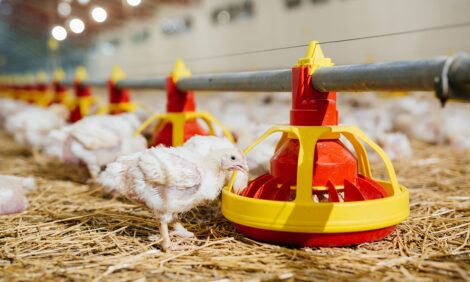



HVT-IBD vaccine protects against early AL2 challenge in SPF broilers
New research presented at 2022 IPSF showed vaccination protects birds from IBDInfectious bursal disease continues to be a major health issue for US broiler producers. New research presented at the 2022 International Poultry Scientific Forum (IPSF) demonstrates that vaccination protects the birds from this disease.
Infectious bursal disease (IBD), also called Gumboro, affects the bursa of Fabricius, a key part of the chicken’s immune system. IBD primarily infects chickens 3 to 6 weeks in age and compromises the chicken’s ability to prevent diseases. There are number of different strains of IBDV, some being very virulent.
Kalen Cookson, Manuel Da Costa, John Dickson and Jon Schaeffer of Zoetis noted that AL2 is the most common IBD virus in US broilers, accounting for as much as half of today’s field isolates.
Previous studies in SPF leghorns showed that Poulvac® Procerta™ HVT-IBD — a single insert IBD recombinant vaccine from Zoetis — gave high levels of 14-day protection against classic IBDV (96-98%), vvIBDV (90-93%) and variant AL2 (78%).
Two additional AL2 challenge studies were conducted to measure early IBD protection in broilers, reported the researchers.
Ross 708 broilers with no maternal antibodies to IBDV were given a full dose of Procerta HVT-IBD in ovo and raised in isolators (5 repetitions per treatment) until study termination. At 19 and 18 days, challenged birds received 3.5 and 3.0 EID50 by eye/nose drop (studies 1 and 2, respectively), said the authors of the study.
At 7 days post challenge, bursameter scores were recorded and bursa to body weight ratios (B:BWs) were determined to calculate protection. Challenged birds with no bursal edema and a mean B:BW within 2 standard deviations of the non-challenged controls were considered protected.
Vaccination results
Vaccinated birds had significantly bigger bursas based on mean bursameter scores (4.8-5.1) and B:BWs (1.4-1.5) compared to the challenge controls (3.5-3.8 bursameter; 0.6 B:BW); and protection was 70% and 78%, respectively.
In both studies, 95% of challenge controls had significant bursal atrophy, indicating full susceptibility and a solid challenge “take” at 18-19 days from 3.0-3.5 log10 of virus. There was no perceptible difference in challenge “take” and protection levels between the two studies.
These results show that Poulvac Procerta HVT-IBD can stimulate high levels of protection in broilers by 18 days of age — a time when maternal antibodies have significantly waned, and field challenge can often get started, said the researchers.









